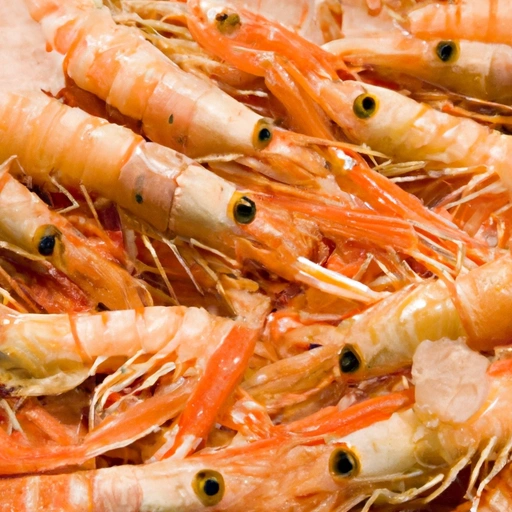Scampi
Description

Scampi, often referred to as langoustine or Dublin Bay prawn, is a type of shellfish that is highly prized in culinary circles for its delicate, sweet flavor and succulent texture. Sourced primarily from the cold waters of the northeastern Atlantic Ocean, scampi belongs to the Nephrops norvegicus species. This flavorful seafood is a staple in various cuisines and is measured in both metric and imperial units, with common quantities including grams, kilograms, ounces, and pounds.
Common uses
Scampi is commonly used in a variety of dishes, from appetizers to main courses. It can be prepared using a multitude of cooking techniques and is often accompanied by flavorful sauces or seasonings to complement its natural taste.
Nutritional value
Calories
Scampi is relatively low in calories, with an average serving size of 85 grams (3 ounces) providing about 90 calories.
Protein
Scampi is an excellent source of protein, with the same serving size offering approximately 17 grams.
Fat
This seafood is low in fat, containing roughly 1.5 grams of fat per serving.
Carbohydrates
Scampi contains negligible carbohydrates, making it a suitable option for low-carb diets.
Vitamins
It provides a good source of vitamins, particularly B-vitamins such as B12 and niacin.
Minerals
Rich in minerals, scampi offers significant amounts of iodine, selenium, phosphorus, and zinc.
Health benefits
Scampi's high protein and low-fat content make it a healthy choice for those looking to maintain or lose weight. Its array of vitamins and minerals contribute to overall health, supporting the immune system, and promoting healthy metabolism.
Potential risks
As with other shellfish, scampi carries the risk of food allergies and should be consumed with caution by individuals with known shellfish allergies. It's also important to source scampi from reputable suppliers to avoid the risk of contamination with pollutants.
Common recipes
Scampi can be enjoyed in dishes such as scampi al ajillo (garlic scampi), pasta with scampi, or simply grilled scampi.
Cooking methods
Popular cooking methods for scampi include grilling, broiling, sautéing, and boiling. Each method brings out a different aspect of its delicate flavor.
Pairing with other ingredients
Scampi pairs well with a variety of ingredients, including garlic, butter, lemon, and fresh herbs, as well as with white wine and crusty bread for soaking up the delectable juices.
Summary
Scampi is a cherished seafood ingredient known for its delicate taste and versatility in the kitchen. Whether incorporated into traditional European recipes or embraced by American culinary trends, it remains a sought-after choice for chefs and home cooks alike. With its considerable nutritional benefits and array of culinary applications, scampi is a global favorite that transcends cultural and regional boundaries.